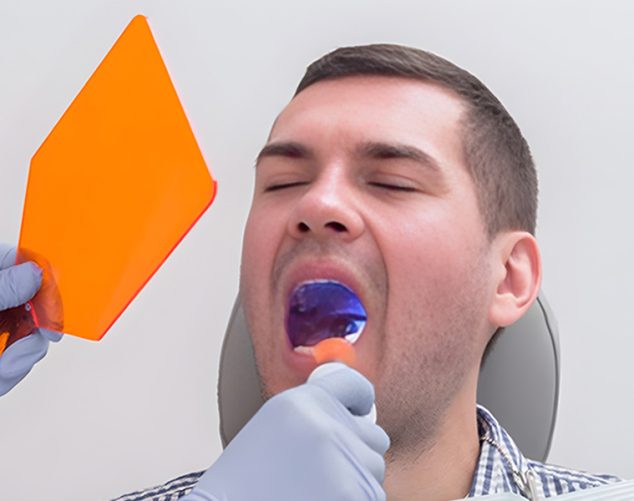
What to Expect in Terms of Pain After Tooth Extraction?
Tooth extraction is a dental procedure, yet many patients remain uncertain about the discomfort that may follow. Understanding the nature, duration, and management of post-extraction pain is essential for a smooth recovery. This blog outlines what to expect at each stage of healing, providing clear insight to help you navigate the process with confidence and reassurance.
What Kind of Pain Is Normal After a Tooth Extraction?
After a tooth comes out, it’s natural to feel soreness in the area. This pain isn’t sharp or severe for most people. It usually feels dull, like a bruise or a sore muscle. Some swelling and sensitivity also show up as your body starts the healing process.
You might notice:
- Throbbing at the extraction site
- Soreness when chewing or opening your mouth
- Slight swelling in your cheek or jaw
- Tenderness that increases slightly in the first 24 hours
These are typical and should lessen each day. Keeping your head raised and using a cold compress can help during the early hours.
Pain Timeline: What to Expect Day by Day
Knowing what to anticipate helps you stay calm. Here’s a simple breakdown of the days after your procedure:
Day 1:
- You’ll feel numb right after the extraction.
- Once the anesthesia fades, expect mild to moderate pain.
- Bleeding may occur for a few hours—biting down on gauze helps stop it.
Day 2-3:
- Swelling may peak during this time.
- Pain can linger, but should not worsen.
- Keep rinsing gently with salt water (but don’t swish hard).
Day 4-5:
- Discomfort often begins to ease.
- You’ll notice the clot firming up and the site closing slightly.
Day 6-7:
- Most people feel much better by now.
- You may have soreness but not constant pain.
Week 2 and beyond:
- Healing continues under the surface.
- If stitches were placed, your dentist in 92064 might remove them now.
Factors That Influence Post-Extraction Pain
Everyone heals a little differently. Some bounce back quickly; others take their time. Pain levels depend on several factors:
- Location of the tooth: Molars take longer than front teeth.
- Was it a surgical extraction? Removing impacted teeth or those under the gum involves more trauma.
- Your health: Conditions like diabetes or smoking can slow healing.
- Age: Younger patients often recover faster.
- Aftercare: Following instructions helps prevent dry socket and other problems.
If your extraction involved a wisdom tooth or an infected area, pain might last a bit longer.
Tips for Managing Pain After Tooth Extraction
You don’t need to suffer in silence. Many simple things can help you stay comfortable as your body repairs itself:
Do:
- Use a cold compress in the first 24–48 hours
- Rest with your head elevated
- Consume soft foods like yogurt, mashed potatoes, or smoothies
- Rinse with warm salt water (starting Day 2)
- Take prescribed medication or over-the-counter pain relief
Avoid:
- Drinking from straws
- Smoking or vaping
- Crunchy, spicy, or hot foods
- Touching the area with your tongue or fingers
- Intense exercise for a few days
Your dentist will likely offer specific care instructions tailored to your needs. Follow them carefully—they play a key role in your comfort and healing. If you have any concerns or need guidance, reach out to a dentist near you for support and reassurance.
When Should You Be Concerned?
While most pain fades with time, some signs may indicate a complication. If something feels off, don’t wait.
Contact your dental office if:
- Pain worsens after 3–4 days instead of improving
- You feel a foul taste or smell in your mouth
- There’s no clot forming at the extraction site
- Your face or jaw becomes more swollen or red
- You have a fever or chills
These could be signs of infection or a dry socket. The sooner you get help, the faster your mouth can heal.
How Long Does the Pain Last?
Most people feel a noticeable improvement after 3–5 days. By the end of the first week, the pain should taper off significantly. Mild soreness can linger up to two weeks, especially after a tooth extraction in Poway that was more complex.
Healing below the surface continues for a few more weeks. You might feel odd sensations, like itching or tightness, as your gums reshape and settle.
Pain Management Options: Beyond Medications
Medications aren’t your only ally when it comes to pain. There are other ways to feel better without over-relying on pills.
Consider:
- Cold compresses: Excellent for reducing swelling early on
- Warm salt water rinses: Help prevent infection and soothe tissue
- Clove oil (in moderation): A natural numbing agent used sparingly
- Chamomile tea bags: Slightly warm and pressed to the area, can help calm irritation
- Acupuncture or pressure point therapy: If you’re open to holistic support
Your dentist in Poway might even recommend certain gels or ointments that numb the area temporarily. Just make sure to ask before using anything new.
Final Thoughts
Pain after a tooth extraction is temporary, but proper care ensures a smoother, faster recovery. Trust your body’s healing process—and don’t hesitate to seek help if something feels off. For expert guidance and personalized support, contact Poway Modern Dentistry. Their efficient team is ready to assist you every step of the way and protect your lasting oral health.